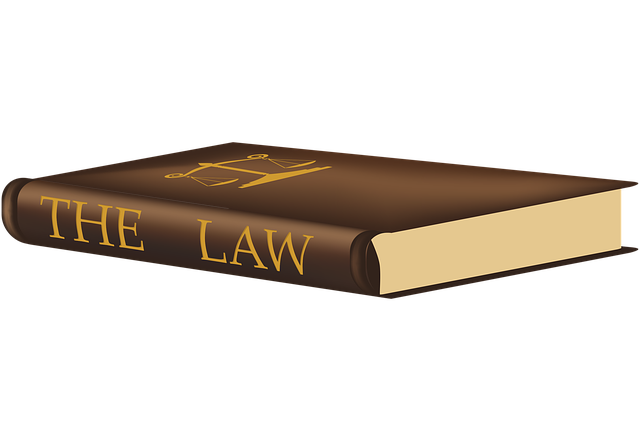Criminal law involves intricate processes aimed at public safety and justice. Understanding Differences Between Appeal and Post-Conviction Relief is crucial for legal navigation. Appeals challenge conviction legality, while post-conviction relief examines trial circumstances, correcting errors or considering new evidence. These distinctions are vital for accused individuals, especially in complex white-collar cases. Attorneys must grasp these options to preserve client rights, aiming to vacate or modify sentences based on overlooked issues from the trial and sentencing phases.
Criminal Law Enforcement is a complex and critical aspect of societal governance, focusing on the investigation, prosecution, and resolution of criminal cases. This article provides an in-depth look at key components of this process, including an overview of criminal law enforcement, the rights and procedures for accused individuals through appeals, post-conviction relief options, and the strategic choice between appeals and post-conviction relief. Understanding these differences is vital for both legal professionals and individuals navigating the justice system.
- Understanding Criminal Law Enforcement: An Overview
- The Process of Appeal: Rights and Procedures for Accused Individuals
- Post-Conviction Relief: Options and Timeframes for Seeking Justice
- Key Differences: When to Choose Appeal vs. Post-Conviction Relief
Understanding Criminal Law Enforcement: An Overview

Criminal law enforcement is a multifaceted domain that involves the intricate web of laws and procedures aimed at maintaining public safety and justice. It encompasses all stages of the investigative and enforcement process, from initial suspicion to conviction and beyond. Understanding this complex system requires a grasp of fundamental concepts like the difference between appeal and post-conviction relief, which are crucial in navigating high-stakes cases across the country.
While appeals focus on challenging the legal validity of a conviction, post-conviction relief delves into specific circumstances that may have affected the outcome of a trial. These processes ensure that justice remains not just a concept but a reality for all citizens, as they allow for the review and correction of potential errors or new evidence that could significantly alter the course of a case. Across the country, these mechanisms play a vital role in fostering fairness and accountability within the criminal justice system.
The Process of Appeal: Rights and Procedures for Accused Individuals

When convicted of a crime, individuals have the right to appeal their case, offering a crucial avenue for potential justice and the possibility of winning challenging defense verdicts. The process of appeal differs from post-conviction relief in its timing and scope. While post-conviction relief typically involves seeking relief after all direct appeals have been exhausted, an appeal is part of the direct review process immediately following conviction or sentencing.
Understanding these differences is vital for accused individuals navigating all stages of the investigative and enforcement process, especially when dealing with complex white collar defense cases. The right to appeal ensures that mistakes made during trial are scrutinized, allowing for potential reversals based on legal errors or insufficient evidence. However, success in an appeal isn’t guaranteed; it requires a thorough review of the record, identification of errors, and persuasive legal arguments presented by experienced counsel.
Post-Conviction Relief: Options and Timeframes for Seeking Justice

Post-conviction relief offers a second chance for individuals who believe their conviction or sentence is unjust. Unlike an appeal, which challenges the initial trial process, post-conviction relief focuses on errors that occurred after sentencing. This includes issues like ineffective assistance of counsel, newly discovered evidence, or mistakes in executing the sentence. The key difference between these two lies in timing; appeals are typically filed within a specified period after the verdict, while post-conviction relief has no such deadline for certain types of errors.
For his clients facing criminal charges, whether it’s a general criminal defense or white-collar matters, understanding these options is crucial. Timely filing is essential to preserve rights and ensure justice. While appeals are often about overturning a verdict, post-conviction relief aims to vacate or modify a sentence based on errors that may have been overlooked during the trial or sentencing phase. This process allows for a more comprehensive review of the case, providing a pathway towards redress for potential miscarriages of justice.
Key Differences: When to Choose Appeal vs. Post-Conviction Relief
When facing a criminal conviction, individuals often face a critical decision regarding their legal options: appealing the verdict or seeking post-conviction relief. Understanding the key differences between these two avenues is essential for making an informed choice, especially in high-stakes cases across the country. While both paths aim to challenge and potentially overturn a guilty ruling, they operate under distinct procedural frameworks and serve different purposes.
Appeals are typically used to review errors made during the original trial process, such as violations of legal rights or evidentiary mistakes. This route is often chosen for direct challenges to the verdict based on factual or legal grounds, especially in cases involving white-collar and economic crimes where complex legal issues may have been overlooked. In contrast, post-conviction relief focuses on new evidence, procedural errors not previously raised, or changes in the law that could impact the defendant’s sentence or guilt determination. It is a broader mechanism to collate and present additional arguments or facts that were not available during the initial trial, providing a second chance for those who feel justice was not served.
In navigating the complexities of criminal law enforcement, understanding the distinctions between an appeal and post-conviction relief is paramount for accused individuals seeking justice. While appeals focus on correcting legal errors occurring during trial, post-conviction relief examines claims that were not adequately addressed at trial or on appeal. Both avenues offer opportunities to challenge convictions, but with unique rights, procedures, and timeframes. By discerning these differences, individuals can make informed decisions, ensuring their legal rights are protected and they receive the appropriate form of judicial redress.






